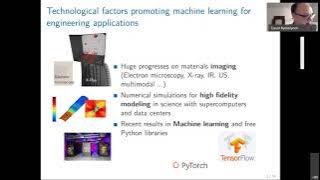Control theory | Signal processing
Head-related transfer function
A head-related transfer function (HRTF), also known as anatomical transfer function (ATF), is a response that characterizes how an ear receives a sound from a point in space. As sound strikes the listener, the size and shape of the head, ears, ear canal, density of the head, size and shape of nasal and oral cavities, all transform the sound and affect how it is perceived, boosting some frequencies and attenuating others. Generally speaking, the HRTF boosts frequencies from 2–5 kHz with a primary resonance of +17 dB at 2,700 Hz. But the response curve is more complex than a single bump, affects a broad frequency spectrum, and varies significantly from person to person. A pair of HRTFs for two ears can be used to synthesize a binaural sound that seems to come from a particular point in space. It is a transfer function, describing how a sound from a specific point will arrive at the ear (generally at the outer end of the auditory canal). Some consumer home entertainment products designed to reproduce surround sound from stereo (two-speaker) headphones use HRTFs. Some forms of HRTF-processing have also been included in computer software to simulate surround sound playback from loudspeakers. Humans have just two ears, but can locate sounds in three dimensions – in range (distance), in direction above and below (elevation), in front and to the rear, as well as to either side (azimuth). This is possible because the brain, inner ear, and the external ears (pinna) work together to make inferences about location. This ability to localize sound sources may have developed in humans and ancestors as an evolutionary necessity, since the eyes can only see a fraction of the world around a viewer, and vision is hampered in darkness, while the ability to localize a sound source works in all directions, to varying accuracy, regardless of the surrounding light. Humans estimate the location of a source by taking cues derived from one ear (monaural cues), and by comparing cues received at both ears (difference cues or binaural cues). Among the difference cues are time differences of arrival and intensity differences. The monaural cues come from the interaction between the sound source and the human anatomy, in which the original source sound is modified before it enters the ear canal for processing by the auditory system. These modifications encode the source location, and may be captured via an impulse response which relates the source location and the ear location. This impulse response is termed the head-related impulse response (HRIR). Convolution of an arbitrary source sound with the HRIR converts the sound to that which would have been heard by the listener if it had been played at the source location, with the listener's ear at the receiver location. HRIRs have been used to produce virtual surround sound. The HRTF is the Fourier transform of HRIR. HRTFs for left and right ear (expressed above as HRIRs) describe the filtering of a sound source (x(t)) before it is perceived at the left and right ears as xL(t) and xR(t), respectively. The HRTF can also be described as the modifications to a sound from a direction in free air to the sound as it arrives at the eardrum. These modifications include the shape of the listener's outer ear, the shape of the listener's head and body, the acoustic characteristics of the space in which the sound is played, and so on. All these characteristics will influence how (or whether) a listener can accurately tell what direction a sound is coming from. In the AES69-2015 standard, the Audio Engineering Society (AES) has defined the SOFA file format for storing spatially oriented acoustic data like head-related transfer functions (HRTFs). SOFA software libraries and files are collected at the Sofa Conventions website. (Wikipedia).



















